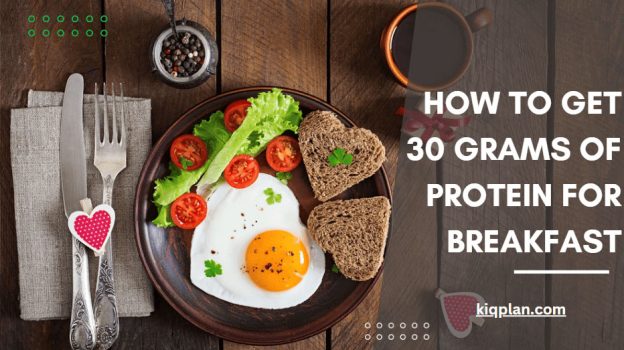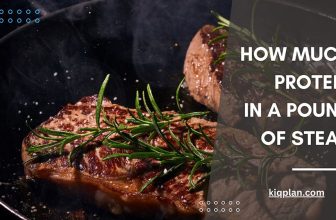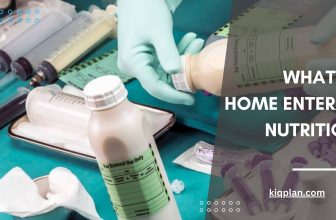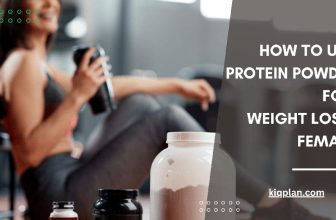Medical and health professionals around the world agree that breakfast is the most important meal of the day. It helps kickstart your metabolism and gives you the energy you need to go about your day without feeling crummy.
If you’re a fitness freak, you might wonder how to get 30 grams of protein for breakfast. We know that stuffing in so much protein in breakfast can be tough. Maybe you’re not hungry when you wake up, or you’re short on time and have a million other things to do.
Whatever the reason, this guide will help you include 30 grams of protein in your breakfast to prepare you for a jam-packed day.
Why 30 Grams of Protein?
30 grams of protein: where exactly did this magic number come from?
According to the National Academy of Medicine, conventional nutritional science advises consuming an average of 1.1 to 1.5 grams of protein per kilogram of body weight. If you do the math, this comes out to, on average, at least 30 grams of protein per meal in a three-meal day.
The problem is that it’s easier to consume that much protein throughout the day rather than immediately after you wake up.
Over the years, there has actually been a lot of research, specifically about the benefits of consuming 30 grams of protein for breakfast.
One 2020 study specifically stands out, which puts it very simply: when you’re asleep, your body is predominantly in a catabolic state. In other words, it is resting and repairing. But once you wake up, it switches gears into a predominantly anabolic state, which involves building and growth.
Note: This is a generalized statement for easier understanding. You should remember that your body is hard at work, even when you’re asleep.
Benefits of Consuming 30 Grams of Protein
Here are some other benefits of consuming 30 grams of protein for breakfast:
Energy Boost: Protein isn’t just for bodybuilders; it’s for all of us. It’s like the fuel that revs up our engines. When we consume those 30 grams at the start of the day, our bodies get a turbo boost. We feel more awake, ready to tackle math class or the dreaded nine to five.
Muscle Repair: Protein aids in repairing and rebuilding muscles, which is crucial after a physically demanding day.
Gut Health: High-protein breakfasts support a healthy gut microbiome, promoting digestive health.
Weight Loss: Protein is considered the most important nutrient for effective weight loss. It requires more energy to metabolize, hence burning through more calories. Moreover, it helps you keep full throughout the day.
What Does 30 Grams of Protein Look Like?
30 grams of protein for breakfast may seem like an exorbitant amount. You can easily get that much protein in, say, a single serving of chicken breast, but who wants to eat that first thing in the morning?
But it’s actually not that hard to get 30 grams of protein for breakfast. Let’s try to visualize it.
The following are USDA’s estimation for the amount of protein in typical breakfast foods:
Eggs: One large egg contains around 6 grams of protein. To reach the 30-gram mark, you'll need about five large eggs. If you prefer just the whites, you'll have to crack open around eight eggs for the same protein punch.
Bacon: Love bacon? Well, you might want to prepare yourself for a hefty breakfast because you'll need to devour about seven slices to hit that 30-gram protein goal.
Greek Yogurt: This creamy and refreshing delight offers about 15-20 grams of protein per serving. To kickstart your morning with a protein boost, you'll need about two cups.
Milk: Whether you prefer it cold or steaming in your coffee, a glass of milk provides around 8 grams of protein. You’ll have to pour yourself three and a half cups to meet your 30-gram target.
Peanut Butter: Spread about five tablespoons of peanut butter on your toast for a tasty and protein-packed start to your day. Each serving contributes about 8 grams of protein.
Oatmeal: A cup of cooked oatmeal provides around 6 grams of protein. To reach the 30-gram mark, you’ll have to scoff down about five cups.
Cheddar Cheese: We all love a cheesy breakfast, sprinkling it on our breakfast quesadillas or omelets. But If you eat it straight out of the bag, you’ll need to eat a little over one cup of cheese to hit the 30 grams of protein mark, which we definitely don’t recommend.
In fact, it’s pretty unrealistic to try to get all 30 grams of protein from just one food. For starters, it can get pretty repetitive. Moreover, you also need to strike a balance with other essential nutrients without overeating.
How To Get 30 Grams of Protein for Breakfast: 4 Recipes
Are you wondering how to get 30 grams of protein for breakfast? Here are simple yet diverse recipes for delicious breakfast ideas that pack a protein punch.
Greek Yogurt Parfait
Greek yogurt is a powerhouse of protein, and when paired with nutrient-rich toppings, it’s irresistibly refreshing and delicious. Layer Greek yogurt with fresh berries, nuts, and a drizzle of honey for a creamy and satisfying breakfast parfait.
Check out this recipe by Foolproof Living.
Quinoa Breakfast Bowl
Quinoa is a complete protein, meaning it contains all nine essential amino acids. It can be both savory and sweet, depending on your mood that day. Either way, a simple quinoa bowl can easily give you 20 grams of protein, and just a few simple additions can bring that number up to thirty.
Here is a recipe you can experiment with.
Egg and Avocado Toast
Eggs and avocados are excellent sources of protein and healthy fats. Top whole grain toast with mashed avocado and a poached or scrambled egg for a simple yet satisfying breakfast. Each toast provides 8-10 grams of protein.
There are various ways to prepare egg and avocado toast to suit your taste buds. Here are some tried-and-tested recipes, along with their nutritional information.
Protein Pancakes
Pancakes may not seem like a typical protein-rich breakfast, but with a few simple swaps, you can enjoy a stack that's both delicious and nutritious.
Whip up a batch of fluffy pancakes using a protein pancake mix or by adding protein powder to your favorite pancake recipe. Serve with Greek yogurt or a dollop of nut butter for an extra protein boost.
Here’s an easy recipe that packs a whopping 40 grams of protein.
How to Start Your Day with 30 Grams of Protein: Tips and Tricks
Here are some additional tips and tricks on how to get 30 grams of protein for breakfast:
Prep Ahead: Spend some time on the weekends prepping breakfast items like hard-boiled eggs, Greek yogurt parfaits, or protein smoothie packs. Having these ready-to-go options on hand makes it easier to reach your protein goals, even on busy mornings.
Budget-Friendly Options: Opt for budget-friendly protein sources such as eggs, beans, tofu, and Greek yogurt. These options are not only affordable but also versatile, allowing you to create a variety of delicious breakfasts without breaking the bank.
Add Protein Boosters: Enhance the protein content of your breakfast by adding protein boosters such as protein powder, chia seeds, hemp seeds, or nuts. These can easily be incorporated into smoothies, oatmeal, or yogurt bowls for an extra protein kick.
Balance with Other Nutrients: While protein is important, don't forget to include other essential nutrients in your breakfast, such as carbohydrates, fats, and fiber. Aim for a balanced breakfast that will keep you satisfied and energized until your next meal.
Customize to Dietary Needs: Whether you're vegetarian, vegan, gluten-free, or lactose intolerant, there are plenty of protein-rich breakfast options available to suit your dietary needs. Experiment with different ingredients and recipes to find what works best for you.
Adjusting for Dietary Preferences and Restrictions
When it comes to breakfast, everyone's different, and that includes their dietary preferences and restrictions. So, how to get 30 grams of protein for breakfast when you can’t consume things like eggs, meat, and grains?
Don't worry, there are plenty of ways to adjust your breakfast to meet your needs.
Vegetarian or Vegan: If you don't eat meat or animal products, you can still get plenty of protein from plant-based sources like tofu, tempeh, beans, lentils, and nuts.
Gluten-Free: For those avoiding gluten, options like gluten-free oats, quinoa, eggs, Greek yogurt, and smoothies made with fruits and vegetables are great choices.
Dairy-Free: If you're lactose intolerant or avoiding dairy, try alternatives like almond milk, soy milk, coconut yogurt, or dairy-free protein powders to add protein to your breakfast.
Low Carb or Keto: If you're following a low-carb or ketogenic diet, focus on protein-rich foods like eggs, bacon, Greek yogurt, cheese, and nuts for a satisfying breakfast that keeps you full.
Allergies: For those with food allergies, it's important to read labels carefully and choose options that are safe for you. Fortunately, there are many allergy-friendly breakfast options available, from nut-free granola to seed butter toast.
Conclusion
If you’re wondering how to get 30 grams of protein for breakfast every day, hopefully now you know.
Protein is key for weight loss and overall health. Remember, though, it’s all about balance. Notwithstanding dietary restrictions and preferences, pairing protein with carbs and fats ensures you reap the full benefits.
So, set yourself up for success by kickstarting your day with a punch of protein.








